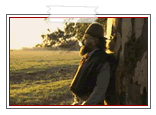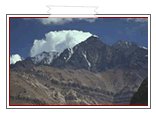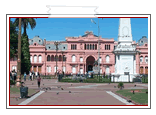![]()
Argentina's wide variety of ecosystems is reflected on the great number of activities that can be enjoyed throughout the country. Each location offers a range of opportunities for visitors to enjoy in close contact with nature, its challenges and secrets, and surrounded by landscapes that make visitors feel like discoverers. Daily activities are adapted to the most demanding tastes and interests. The only limit is your own imagination…

The name Argentina
It comes from the Latin term “argentum”, which means silver ( Plata in Spanish) . The origin of this name goes back to the first voyages made by the Spanish conquerors to the Río de la Plata. The survivors of the shipwrecked expedition found indigenous people in the region who gave them silver objects as presents which they took back to Spain. . As from this date, the Portuguese named the river of Solís, Río de la Plata (River of Silver). Two years later the Spanish adopted the same name Argentina.
Location, area and frontiers
Located in South America, and thus, in the Southern hemisphere, Argentina has an area of almost 3.8 million square kilometers. The neighbouring countries are Uruguay, Brazil, Paraguay, Bolivia and Chile along a perimeter of 9,376 Km, while the territory bordered by the Atlantic Ocean is 4,725 Km long.
Geography
Argentina’s main characteristic is the enormous contrast between the immense eastern plains and the impressive Andes mountain range to the west. This is the frontier with Chile and boasts the highest peak in the Western hemisphere: the 6,959 m high Aconcagua.
From Jujuy to Tierra del Fuego, the Andes present marvelous contrasts: the Northwest plateaus, the lake district, the forests and glaciers in the Patagonia… You name it !!!

Between the Paraná and Uruguay rivers, the Argentine Mesopotamia (provinces of Entre Ríos, Corrientes and Misiones) is formed by low hills, where pools and marshlands evidence the ancient courses of these great rivers. In some places within the subtropical rain forest, there are fissures which provide such spectacular phenomena as the Iguazú Falls.
The Pampas, in the center of Argentina, is the largest and best-known area of plains.
Agricultural and livestock activities are performed in this area, which includes the province of Buenos Aires, the northeast of La Pampa, the south of Córdoba and south of Santa Fe. To the south, the plains give way to small hills in Tandil and de la Ventana, and to the west, to the Córdoba hills.
Towards the south, from the Andes to the sea, there appear the sterile and stony plateaus of Patagonia, swept by the wind during most of the year. The Atlantic coast, lined with high cliffs, forms massive indentations like the Peninsula Valdés, with its spectacular and unique colonies of sea mammals.
Climate
Because of the large extension of the territory, there is a a wide variety of climates: subtropical in the North, sub-Antarctic in the southern Patagonia, and mild and humid in the Pampas plains. Media temperature from November to March is 23° C, and 12° C from June to September.
Population
Argentina’s current population is more than 36 million inhabitants, almost half of which live in the city and the province of Buenos Aires. Population density calculated on a national basis is 13 inhabitants per square kilometer.
Language
Spanish is the official language of the Argentine Republic. In Buenos Aires, some “lunfardo” expressions -city slang - are used.
Currency
The official Argentine currency is the Peso. There are bills of 2, 5, 10, 20, 50, and 100 pesos, and coins of 1 peso and 5, 10, 25 and 50 cents.
Constitution and Government
Argentina consists of 23 provinces plus a federal district, the City Buenos Aires. The Argentine Constitution establishes a Republic under a representative and federal system, and three separate branches of government: executive, legislative and judicial.

Two historical dates
May 25, 1810. The first National Government Assembly was constituted.
July 9, 1816. Independence Day.
National emblems
The Argentine flag has three horizontal stripes: the one in the middle is white and bears the golden sun, and the two outside stripes are light blue. The national flower is the ceibo, and the national stone is the manganese spar (rodocrosita) or "Inca Rose".
Argentine bank holidays:
January 1St New Year March/April Easter - Good Friday April 2 Veterans’ Day May 1St Labor Day May 25 Anniversary of the First Independent Argentine Government June 20 National Flag Day July 9 National Independence Day August 17 Anniversary of the death of General San Martín October 12 Columbus Day December 8 Immaculate Conception Day December 25 Christmas Day